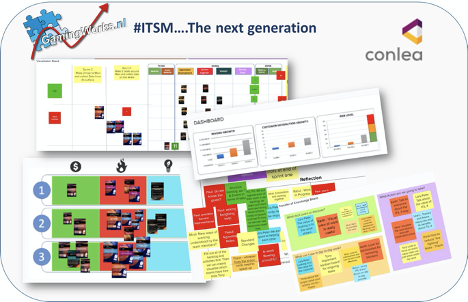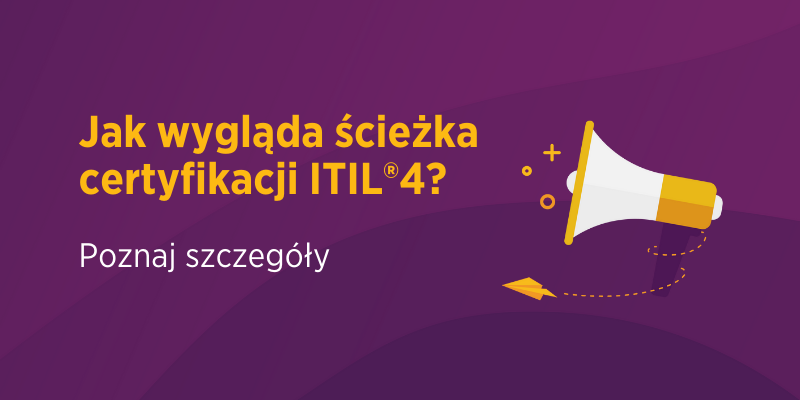Co to jest ITIL®? Wszystko o zarządzaniu usługami IT
ITIL to uznany na całym świecie zbiór najlepszych praktyk zarządzania IT. Przeczytaj o najważniejszych koncepcjach i komponentach najnowszej wersji ITIL 4. czytaj dalej
The Icy rain clawed at the window, The Ice and snow turning to a brownish, grey slush. The windows were steaming up. The Mission Director stared intently at his glowing computer screen watching and listening to the remote Mission Control team managing the latest MarsLander flight hurtling through the silent, unforgiving void of space.
The Icy rain clawed at the window, The Ice and snow turning to a brownish, grey slush. The windows were steaming up. The Mission Director stared intently at his glowing computer screen watching and listening to the remote Mission Control team managing the latest MarsLander flight hurtling through the silent, unforgiving void of space.
‘….I want my feature, make me some money’ insisted the Product owner on behalf of the Sales Director.
‘Maybe we should do one of the Service Improvement initiatives to remove the waste….’ Began the Service Manager.
‘I want the solar cells issue solving’ interrupted the Flight operations manager.
‘No, its low risk, we will go with my money’… replied the Product owner.
‘We have maximized our resource allocation and we still have a growing backlog of demands. We need to free up some WIP (Work-In-Progress) space with improvements’ tried the Service manager again.
‘…Later. Is my feature ready to deploy change manager’ asked the Product owner looking at the Mission clock, wanting to achieve his revenue KPI.
The dialogue above was a snapshot of what happened within a team. The team were playing the Mission control roles in the Marslander simulation game. They were unconsciously applying the ITIL®4 guiding principle ‘Focus on value’. The dialogue between the stakeholders represented ‘value and Outcomes’ -from the product owner perspective, Risk – from the Flight Operations director and ‘Costs’ (wasted resources) from the Service Manager.
They were all defending their own perceptions on ‘value’ with a priority mechanism of ‘who shouts the loudest’. In the End the Product owner won, achieving short term KPI on revenue growth, but failing to focus on longer term transformation ambitions by applying improvements aimed at creating high-velocity IT capabilities.
In this business simulation workshop delegates will be playing either a business or IT role in the Mission control room of the MarsLander mission. Working for a company called SPACE-Y. As a team you will need to balance increasing demands and opportunities from different stakeholders. Innovating new products and service offerings, optimizing existing business value, managing technical debt as well as aligning and improving end-to-end value streams. There is a lot of competition in the market. Speed and quality count. As a team you will be faced with running business as usual as well as Transforming to new agile ways of applying ITSM using ITIL4 concepts. With scarce resources and growing demands the team is challenged to apply agile ways of working such as ITIL®4 to deliver value. They will need to translate theory into PRACTICE!
The simulation is played in a number of game rounds, allowing the team to practice ‘progress iteratively with feedback’ – which, in my mind needs to be a core capability of IT teams – between game rounds.
….After applying small iterative improvements between each sprint (game round), the team saw that behaviors were being consistently applied and that value was being realized. They had also applied ‘Collaborate and promote visibility’ – agreeing behaviors that demonstrated effective collaboration (active listening, respect for each other, engaging all, confirming decisions) and applying visibility. Insight into goals, workloads, barriers, constraints – providing situational awareness and enabling fast, effective decision making.

At the end of the workshop we captured key learning points and actions that teams could take away and apply. These were the findings from two separate teams. Take a look! Which of these would should YOU be adopting end-to-end in YOUR organization?. Get YOUR end-to-end stakeholders together to experience ITSM the next generation and capture shared, practical takeaways for applying ITIL®4 or new ‘agile ways of working’ in your organization. Failure is NOT an option!
At the end of the session the team were less stressed and frustrated at the growing demands placed upon them, work was flowing smoothly through the end-to-end value streams. Mission goals and value was being realized. Business and IT were focused on delivering value, managing risks, and continually improving to meet changing business demands in this age of digital disruption and the need for agility.
Kategorie: ITIL
Zostaw swój email, a będziemy regularnie informować Cię o nowych artykułach.

ITIL to uznany na całym świecie zbiór najlepszych praktyk zarządzania IT. Przeczytaj o najważniejszych koncepcjach i komponentach najnowszej wersji ITIL 4. czytaj dalej

ITIL 4 dostarcza wskazówek jak wykorzystać możliwości IT w dostarczaniu usług. Poznaj główne koncepcje przedstawione w publikacji ITIL 4 Foundation. czytaj dalej

Ścieżka certyfikacji ITIL 4 zapewnia modułowe podejście do ITIL 4. Zbudowana jest z kompetencji skupionych na kluczowych aspektach praktyk ITIL. czytaj dalej

Dowiedz się jakie certyfikaty IT dają szansę na wzrost zarobków wg badania Global Knowledge 2020 IT Skills and Salary Survey. czytaj dalej